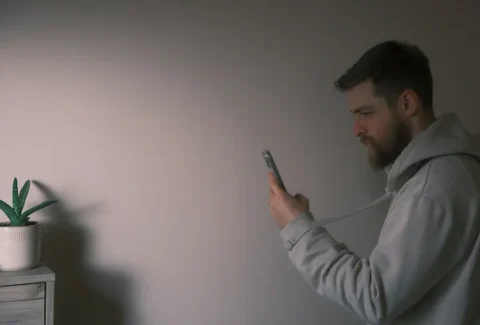My quest for Ikigai
I call myself a ‘Story Coach’. But (a) what is that really? and (b) how did I reach here?
This (ultra-long, slightly indulgent) story is about my journey.
I’m sure many of you have heard of the Japanese concept of Ikigai. Loosely translated as “a reason for being”, it’s a powerful framework to figure out your true purpose in life – that which will bring most happiness to you.

This story is about the quest to find my Ikigai.
Before we begin, a few disclaimers!
– This piece was to be a quick recap of my career choices using the Ikigai framework. As I was writing it, however, it took a life of its own and morphed into some semi-autobiographical monster… which was not the intention. But writing-plans rarely survive contact with the keyboard…
– The previous stories in the #40StoriesAt40 series were mostly bite-sized and appealed to a larger demographic. This one is a long-read and may not appeal to everyone. Why am I still posting it? Because I think the message – to find your Ikigai – is something that I strongly and truly believe in.
– While I refer to it extensively in this article, I did not know of Ikigai till a few years back. So it’s not as if I have carefully planned my life using this tool! This post is just about me using the framework to look back at my life and ‘connect the dots’, so to speak.
On that note, let’s begin.
Our careers are hypothesis-driven.
You may not realise it, but every time you choose a career or a job, you (or the person influencing your decision) are testing a hypothesis: “This will work because of X, Y or Z”. Most often these hypotheses are not written down, or even formally thought through. But they are present.
The problem is, once we start working, we forget them and immerse ourselves in the day-to-day minutiae. Until the next hypothesis comes along.
In my case too, I’ve built and tested hypotheses (or stories that I told myself).
It was only later that I realised that I had been subconsciously following one framework through my experiments.
Ikigai.
Here’s the story of my hypotheses
Imagine coming from a different (say Amazonian tribal) civilisation and put on a cricket ground. You’re asked to throw a red object towards a set of 3 sticks. You’re asked to run behind a red ball. People suddenly start clapping and cheering for no discernible reason. You’re playing the game, and playing it well. But you don’t really ‘get’ it.
You may be naturally talented – you can hit the ball well or run faster than others. But till you know and understand the game’s rules, you can’t really achieve your true potential, heck even enjoy the game. And most importantly you can’t decide on the most critical question – is this game really for you?
My first hypothesis … Was not even mine. It was my dad’s.
When I was growing up, youngsters were not as worldly-wise as those of today… Even by those low standards, I was much, much worse than the average. Embarrassingly worse. My dad took the decision for me to join commerce and pursue Chartered Accountancy.
Now here’s where an interesting thing happened. I later turned out to be a middling CA professional. Just about managed to be an ok performer in my CA internship days.
But on one (you might say rather important) criteria, I turned out to be surprisingly good – the exams.
People give many names to the dreaded CA exam. ‘Come Again’ is probably the one that sticks the most. It’s difficult to pass this exam in the first attempt. A small minority of those who appear, pass the exam. A smaller minority of those who pass are awarded ranks.
I got a rank in all three levels of my CA exams with a rather high 11th rank in the crucial CA Final Exam, among 9,707 who gave the exam that year. I also got two prizes for being the highest in the country in the subject of ‘Cost Accounting’.
Clearly this was what I was destined for – my dad had chosen right for me.
Except, no.
In my first job itself, I wasn’t as engaged as I should be… Most critically I didn’t feel connected with my work, there wasn’t a sense of purpose or ownership. Some days were great… But on many days, I remember just waiting for evening to clock out.

At this stage, I would have scored very low on my ‘Ikigai index’.
I was plodding on like this, until a chance conversation happened with a close friend (Manish) at the iconic National Hindu Restaurant, at Ballard Estate, Mumbai.
He basically convinced me to do something that I had postponed for later in life: give the CAT.
My second hypothesis was mine (but not really thought-through)
At least this time the hypothesis was (to some extent) mine. I thought – since I don’t know what to do in life, maybe an MBA, with all the options that it opens up for me, will help me decide.
Given my proclivity for exams, I did well in the CAT, got calls from all the major IIMs and was fortunate to get through to IIMA.
(I remember my grandma asking then – “Why do you have to go all the way to Ahmedabad to study? Doesn’t Bombay have good colleges?”)
IIMA was great fun. My first experience of hostel life (which I think everyone should go through once at least) was very memorable. Strong friendships, great camaraderie… and yes, some good learning too. For example, this one:

While the two years at IIMA gave me some indication of what I’d not be interested in, I still wasn’t sure what I would really like to do – finance, consulting or general management?
Somehow I had the fear of being disengaged in each of those jobs. And so, sometime during the second half of the second year, I was drifting aimlessly, with the Beatles’ song ‘Nowhere Man’ ringing in my ears.
I didn’t understand it then, but I was looking for something with purpose. The only subject I loved was Economic History – and there weren’t many corporate careers in that subject. Still, I yearned to work on something meaningful…
Inspiration arrived in the form of a moving talk by the head of Pratham (the education NGO) in Gujarat – Aditya Natraj.
I thought, this is it! I could join an organisation like Pratham, it would be a wonderful cause, and I could use my skills to contribute to it.
Hypothesis 3 (V1) was the first time I thought on my own…but I didn’t act on it…
After spending 2 years on an MBA, there’s high pressure to get a corporate job. Leaving ‘everything’ to get into the social sector seems noble, but it was an extremely tough call to take.
I spoke to some people, introspected… and decided against it. I simply didn’t have the guts.
I told myself (as we always do) that I could always join it later, after getting some work experience in the ‘real’ business world.
Meanwhile, I was back to my ruminations about which sector to work in.
That’s when a truly different company came to campus for recruitment. They were a less-known advisory firm called ‘Feedback Ventures’ based out of Delhi. Three folks – Gopal, Mukesh and Monika took the interview. Refreshingly different – no corporate airs, friendly, and best of all they were helping build India!
That’s right – Feedback Ventures focused on the ‘Infrastructure’ sector in India. And I was sold! This was it – great people, meaningful work and they paid very well too!
That became Hypotheses 3 (V2): Infrastructure consulting
This hypothesis worked out for me – but not for the reasons I thought it would.
Joining Feedback, I had visions of being in charge of major road, rail or port projects. Well, Feedback did undertake such projects, but they were in different divisions. And while I did work on the feasibility/advisory side for projects in the transport sector (mainly ports and logistics), most of my work happened in a different field: healthcare delivery.
You may not consider healthcare as ‘infrastructure’, but we at Feedback did. For one, it was “social infrastructure”. And two, Feedback was really good at it.
That was because of basically one person: Monika Sood. Monika (batch of 1998, IIMA) is a wonder. Unlimited energy, incredibly sharp and probably India’s foremost expert on the private healthcare delivery space. I started working with her and started to love the space.
Medicine is an utterly fascinating topic and I loved to geek out on treatment modalities, medical equipment and specialised procedures. At one point of time, I briefly contemplated leaving it all and enrolling in medical school! But thankfully for India’s patients, I did not, and continued to work with clients in the business of healthcare.
Apart from healthcare, the other thing we geeked out on, was consulting techniques, especially communication. In the 40 Stories series, I’d written about an epiphany moment with a consulting client:

One of the side activities I loved to do at Feedback was run training sessions for the new joinees. I didn’t realise it then, but that focus on the story – and the training experience – would come in handy later.
The content for these training sessions would come from two sources – our own experiences at work and from books on the topic, which I loved to read. (The McKinsey Way and Presenting to Win were influential).
But if there was one book that influenced me the most, it was the strange-sounding, ‘Made to Stick’ by Chip and Dan Heath (US-based prof-researchers). Recommended by the brilliant Rohan Desai, it has in turn been my most-recommended book to others. I still use the concepts outlined in that book in my training sessions.
Of course, sectors, concepts and frameworks were all good; but the best part about Feedback was its people. The team was an absolute delight to work with. Some of my fondest memories are the offsite retreats we went to – and the multiple trips to the Himalayas organised by the inimitable Ranveer Singh. Unforgettable stuff.
Coming back to work (we did that too, by the way) during the 7 years spent in Feedback, over multiple night-outs, we created some special work for a variety of clients. I was intellectually extremely challenged and content.
But something was missing.

I was itching to make an impact on the most vulnerable and wanted to join the social sector. But the social sector is vast – and I wasn’t sure which cause to choose.
That’s when I read an article in Mint (the newspaper) – about the paradox that India faces of unemployed youth along with businesses facing an acute shortage of skilled manpower.
Surely, there’s got to be a social business model here, I thought. Train youth and place them with the companies – and charge them for the service as a sustainable non-profit.
That became Hypothesis 4: Skill Development as a sustainable social enterprise
I was committed to this space – but didn’t want to start-up on my own. I researched the social enterprises working in the sector and zeroed in on B-ABLE, one of the sector’s first start-ups.
B-ABLE is a Delhi-based skill-development firm founded by Sushil Ramola and Vijay Mahajan (both IIMA alumni). But I joined them because of the strong rapport I built with one of the senior employees: the incredibly talented and driven Abhishek Gupta.
I spent 3 years with B-ABLE in a variety of roles – Strategy, Planning, Placement and other corporate partnerships… I also spent time visiting training centres located in some of the remotest corners of India.
I built strong friendships with some fabulous folks – Abhishek, Kaushik, Vishal, Radhika and many more. I realised that the people in the social space are as driven and talented (if not more) than the business sector. I learnt some new skills, as I shared in this story about my adventures in Itanagar, of all places!
We were working on exciting projects … and progress, though slow, was happening.
Unfortunately, over time, I started getting disillusioned with the space. Primarily because of two reasons:
– Dependence on Government: My hypotheses of building a sustainable for-profit social enterprise turned out to be wrong. Skill development is a ‘market-failure’ sector – and it requires massive government intervention. The government basically funds most entities in the space. And I realised that I didn’t have the ability to successfully work with the government (which was critical to succeed in the sector).
– Operations-heavy nature: Training tens of thousands of youth across 100+ training centres across the country requires strong operations and execution skills. As I’ve written before, that is definitely not my strong suit! If the world was divided into ‘Thinkers’ and ‘Doers’, I’m definitely the former!

Over time these (and other challenges) became too big to bear. I realised I did not have the ability to succeed in the sector – and I left B-ABLE in mid-2014.
During my exit process, I was uncertain – and had no idea what to do next.
And that’s when we undertook a family trip to South India. A typical pilgrimage style trip with plenty of temple-hopping interspersed with fabulous meals at traditional Tamilian eateries.
During one of those temple visits (the Nelliappar temple in my native district, Tirunelveli), I was wandering the massive pillared corridors of this 8th-century architectural wonder.
And I thought: “Who built this? Who financed it? How did they approach the design? What was their story?”
There were no answers.
And, I realised, this was true of India’s most famous monuments. You either had the government-published guidebooks (excellent for your insomnia) or the local guides (who didn’t let inconvenient elements such as facts come in the way of a good story).
I thought – this is it! I could combine my skill of communication and business, along with my passion for history and create a product to meet this need.
That’s how the idea of CaptivaTour was born – a mobile app for audio-guided tours for historical monuments.
This was hypothesis 5: History made interesting
As mentioned before, history was a huge interest area for me. I thought – why not use my love for history and my experience in storytelling to tell entertaining (but accurate) stories of India’s monuments? They had some fabulous stories which deserved to be told!
I happened to mention this to a couple of batchmates – Deepthi and Sid. Inveterate travellers and history buffs themselves, they loved the idea and said that they had been thinking in similar lines!
We did the market research, thought the idea had potential and registered our start-up. (I ticked off start-up co-founder from my bucket list!)
We named the app CaptivaTour and split responsibilities. Deepthi headed Marketing, Sid was Tech plus overall leadership and I focused on the Content (plus some Sales elements).
We decided to start with monuments in Delhi. I took up membership at the library in Pune, picked up as many books on Delhi’s history as I could, and started reading.
The first tour was tough to create- but it was completed in mid-2015. Other tours followed and over time we built 18 tours covering major monuments in Delhi, Agra and Jaipur.
Then came the marketing and selling part. We designed collateral and other marketing material. Initially, when we wanted feedback on the product, I would try and get unsuspecting tourists to try it out (for free). Here’s a crazy story from that time:

During this time, I camped out at Paharganj in Delhi (cheapest rooms, central location, cheap beer at ‘My Bar’) for several weeks to pitch our product to hotel, hostel and B&B owners.
(If you ever want to completely eviscerate your pride, try to sell something to a hardcore West-Delhi hotelier from Paharganj or Karol Baug. It’s a free ego-detox program).
Having said that, the hotels were just the channel. The customers were the tourists – mainly foreigners. Our hypothesis was: Folks have paid thousands of dollars on a trip to see the Taj Mahal. Surely, they would be willing to pay an additional $2 for a great guided tour that enhances their experience!
We were wrong.
Expecting people to pay for content is extremely tough.
Having said that, if there was any team that could have accomplished it, it was this team. Our product was great, we tried everything possible with our limited budgets on the marketing and sales side, we printed great collateral that we gave out free…
Unfortunately, it was not to be. Despite giving it our best, we ultimately had to see the writing on the wall – there was not a market big enough (at least in India) for a product like this. The ‘Economics’ of the Ikigai circle, were just not working out!

During the two year period we were working on CaptivaTour, Sid continued working with another firm, while I had left my job… and was getting antsy.
In order to raise some funds for CaptivaTour, I had approached a Pune based history-lover and corporate trainer called Sriram Subramanian.
Sriram couldn’t offer funding. But having looked at his profile, I asked him another question?
Can I become a corporate trainer with him?
He was incredibly generous and took me as one of his trainers (he had about 5-6 other affiliated trainers).
And it was on 2nd March 2016 that I did my first training session for a leading Indian bank. The topic was Effective Data Analysis. It went off decently enough to encourage me to do more.
Sriram then introduced me to another client – a leading international financial-services major in Bangalore. Sriram was incredibly hands-off and allowed me to structure and create my content.
I ran the first batch of Effective Data Analysis for the Bangalore client. They liked it (although I cringe when I look at some of the content now) and came back – can you run a program on Data Storytelling (referring a book on visual storytelling that had recently been released)?
I immediately got the book, incorporated the concepts in the workshop, and ran my first Data Storytelling workshop in May-2016. They found it useful and scheduled more.
Slowly my training career was picking up.
This was a time when I was juggling two roles – creating data-storytelling content for training corporates; and writing history stories for CaptivaTour. I still hadn’t committed to either then.
Then, the epiphany happened.
So, in CaptivaTour I’d written most of the content till then, but we wanted other writers to create stories too. To enable consistency in the approach for the stories, I crafted an internal 1-pager ‘Principles for History-storytelling’ for CaptivaTour.
And that’s when the massive penny dropped.
I realised that – whether I was dealing with business data, or events from history (or for that matter any set of facts) – the underlying storytelling principles … Were. Exactly. The. Same.
Mind. Blown.
I now knew what I had to do. Become a life-long student of these storytelling techniques. And help people from all walks of life – business, social sector, education – in telling their work stories better, and driving better outcomes by doing the same.
This was something that I was good at. This was something that I was truly passionate about. The economics would hopefully work out. And by enabling people from all sectors tell their stories better, I would be fulfilling the social purpose that I was best-placed to do.
I had to become a Story Coach. Story Rules was born.
This, I realised – is finally it.
This is my calling. This is my purpose.
This… is my Ikigai.

Here’s wishing you the best in your Ikigai journey!
Photo by Patrick Tomasso on Unsplash








